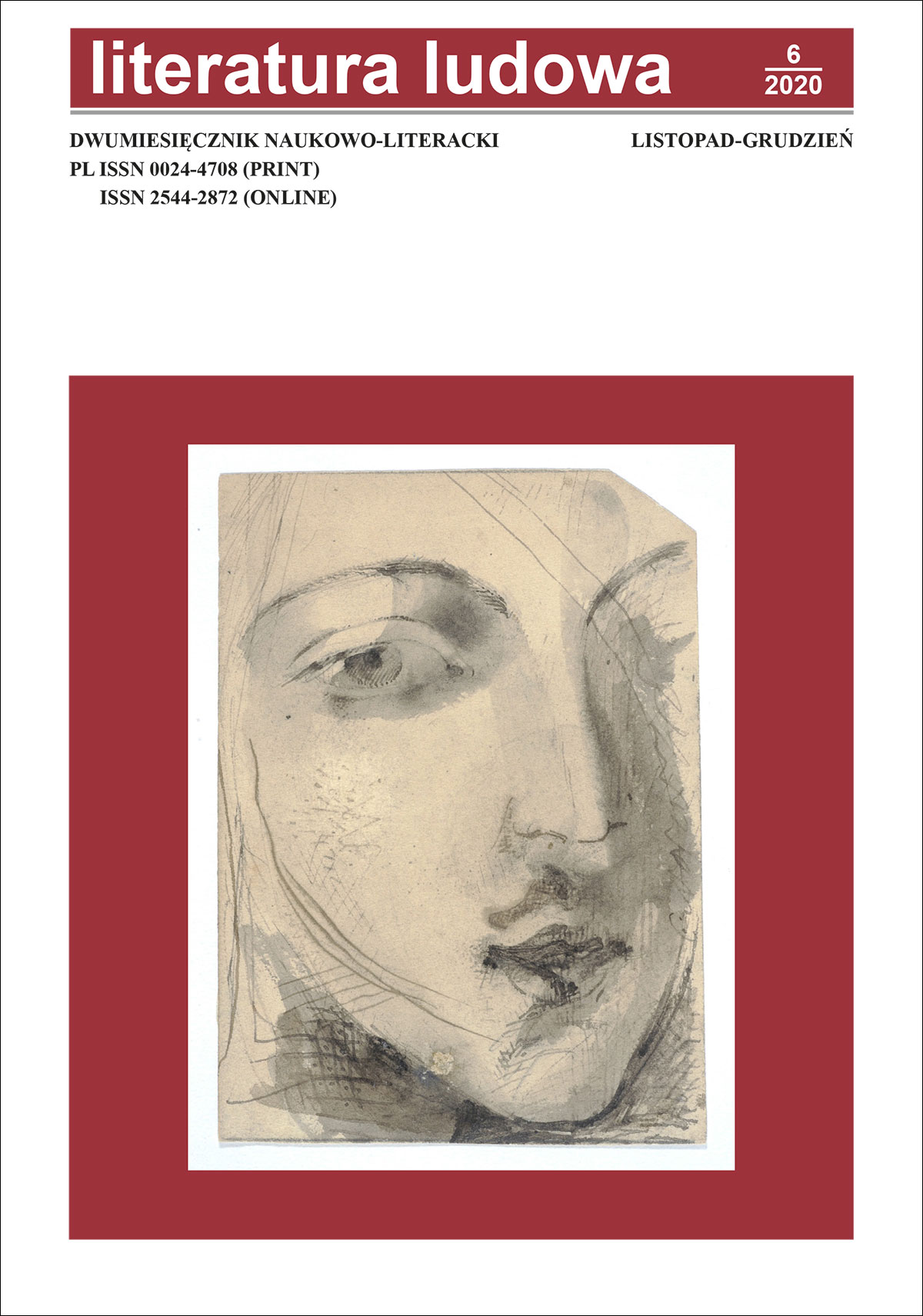Współczesne warunki funkcjonowania niematerialnego dziedzictwa kulturowego w miastach na Białorusi
DOI:
https://doi.org/10.12775/LL.6.2020.003Parole chiave
dziedzictwo niematerialne, miasto, UNESCO, BiałoruśAbstract
Autorka artykułu opisuje specyfikę niematerialnego dziedzictwa kulturowego w miastach na Białorusi. Omawia elementy dziedzictwa miejskiego wpisane na Krajową listę dziedzictwa historyczno-kulturowego Republiki Białorusi, analizuje wybrane tendencje rozwojowe, uwzględniając zarówno ich aspekty pozytywne, jak i negatywne. Do pozytywnych aspektów zalicza: włączenie niematerialnego dziedzictwa do lokalnych planów rozwoju, ochrona w ramach Krajowej listy, rosnące zainteresowanie dziedzictwem wśród ludności miejskiej i partycypacyjne praktyki jego ochrony; do negatywnych: uwarunkowania ekonomiczne, globalizację kulturową, zmiany demograficzne, dekontekstualizację oraz komercjalizację.
Riferimenti bibliografici
Ashworth, G. (2015). Planowanie dziedzictwa (przeł. M. Duda-Gryc). Kraków: Międzynarodowe Centrum Kultury.
Bańka, A. (2018). Psychologia środowiskowa jakości życia i innowacji społecznych. Poznań-Katowice: Stowarzyszenie Psychologia i Architektura.
Chepaītene, R. (2010). Kulturnoe nasledie v globalnom mire. Vilnius: Izdatelstvo “Evropeĭskiĭ gumanitarnyĭ universitet”.
Darashėvich, E. (2010). Nematėryȋal’naȋa kul’turnaȋa spadchyna ŭ struktury suchasnaĭ kul’tury. In: M. Mazhėĭka (ed.), Kul’tura va ŭmovakh hlabalizatsyi: Matėryȋaly navukovaĭ kanferėntsyi (25-26 listapada 2009 hoda) (s. 182-186). Minsk: Belaruski dzȋarzhaŭny ŭniversitėt kultury i mastactvaŭ.
Dorocki, S. (2020). Lokalne dziedzictwo kulturowe jako element rozwoju usług agroturystycznych w Polsce. „Turystyka Kulturowa”, 1, 72-84.
Dzȋarzhaŭny spis historyka-kul’turnykh kashtoŭnastseĭ Rėspubliki Belarus’ (n.d.). Retrieved from: http://gosspisok.gov.by/?AspxAutoDetectCookieSupport=1.
Hobsbawm, E., Ranger, T. (red.) (2008). Tradycja wynaleziona (przeł. M. Godyń, F. Godyń). Kraków: Wydawnictwo Uniwersytetu Jagiellońskiego.
Kalacej, V. V. (2016). Ėkalohiȋa tradytsyĭnaĭ kul’tury i etnamastatskaȋa adukatsyȋa Belarusi. W: B. Matlawski (red.), Tradycyjne instrumenty ludowe w kulturach Europy XXI wieku: Zbiór artykułów naukowych z I Międzynarodowej Konferencji Naukowej, 27-29.06.2015 w Łobzie (s. 139-144). Szczecin: Wydawnictwo Naukowe Uniwersytetu Szczecińskiego.
Kananovich, S. (2016). Rėprezentatsyȋa nematėryȋal’naĭ kul’turnaĭ spadchyny ŭstanovami kul’tury Rėspubliki Belarus’. Aŭtarėferat dysertacyi (rozprawa doktorska, Belaruski dzȋarzhaŭny ŭniversitėt kultury i mastatstvaŭ, Minsk). Retrieved from: https://vak.gov.by/node/2963.
Kobyliński, Z. (2011). Czym jest, komu jest potrzebne i do kogo należy dziedzictwo kulturowe? „Mazowsze. Studia Regionalne”, 7, 21-47.
Kodeks Respubliki Belarus’ ab kul’tury (2016). Retrieved from: https://www.pravo.by/document/?guid=12551&p0=Hk1600413.
Konwencja UNESCO w sprawie ochrony niematerialnego dziedzictwa kulturowego z 2003 roku (2011). Dziennik Ustaw, 172 (1018), 10038-10065.
Lefebvre, H. (1996). Writings on Cities (trans. and ed. E. Kofman, E. Lebas). Oxford: Blackwell Publishers.
Majer, A. (2019). Współczesny świat jest światem miejskim? W: P. Kisel, A. Urbanik, K. Warmińska-Zygmut (red.), Miasto. Ekonomia. Kultura (s. 39-55). Warszawa: Wydawnictwo Naukowe Scholar.
Marmysh, T., Sivochin, H. (2013). Recommendation for Filling the Nomination Form. In: A. Stashkevich (ed.), Identification and Inventorying of the Intangible Cultural Heritage of Belarus Practical Guide (pp. 42-53). Minsk: Institute for Culture of Belarus.
Mead, M. (2000), Kultura i tożsamość. Studium dystansu międzypokoleniowego (przeł. J. Hołówka). Warszawa: Wydawnictwo Naukowe PWN.
Ministry of Culture of the Republic of Belarus (2013). Identification and Inventorying of the Intangible Cultural Heritage of Belarus: Practical Guide. Minsk: Institute of Culture of Belarus.
Mróz, L. (2013). Ochrona niematerialnego dziedzictwa kultury Romów. Przypadek szczególny. W: K. Braun (red.), Niematerialne dziedzictwo kulturowe. Identyfikacja – dokumentacja – ochrona – interpretacja – pojęcia – poglądy. Materiały z Ogólnopolskiej Konferencji Naukowej, Węgorzewo 17-19 czerwca 2011 roku. (s. 231-253). Warszawa–Węgorzewo: Muzeum Historii Polskiego Ruchu Ludowego.
Skaldawski, B. (2013). Krajowy Program Ochrony Dziedzictwa Niematerialnego – propozycja wdrożenia. W: J. Adamowski, K. Smyk (red.), Niematerialne dziedzictwo kulturowe. Źródła – wartości – ochrona (s. 111-121). Lublin-Warszawa: Wydawnictwo Uniwersytetu Marii Curie-Skłodowskiej, Narodowy Instytut Dziedzictwa.
Smolik, A. (2020). Intėrprėtatsyȋa panȋatstsȋa „nematėryȋal’naȋa kul’turnaȋa spadchyna” w aĭchynnym i zamezhnym humanitarnym dyskurse. In: A. Avlasovich (ed.), Kopytinskie chtenia: Vol. 3 (s. 16-18). Mogilev: MGU imeni A.A. Kuleshova.
Stashkevich, A. (ed.) (2017). Mscislaŭ. Belarus. Community-led Urban Strategies in Historic Towns Minsk: Infarmatsyĭna-vylichal’ny tsentr Ministėrstva finansaŭ Respubliki Belarus’.
Stashkevich, A. (2012). Historyka-kulturnaȋa spadchyna. In: I. I. Kruk, A. A. Halkin (ed.), Kultura Belarusi: 20 hod razvitstsȋa, 1991–2011. Minsk: Instytut kultury Belarusi.
Varfalamyeyeva, T.B., Bas’ko, V.I., Kozyenka, M.A., Bohanyeva, A.M. (2004-2013). Tradytsyynaya mastatskaya kul’tura byelarusaw. Minsk: Byelorusskaya Nauka.
UNESCO (n.d.). Dive into intangible cultural heritage! Retrieved from: https://ich.unesco.org/en/dive&display=threat#tabs.
United Nations Conference on Housing and Sustainable Urban Development (2017). Habitat III. Issue Papers. New York: United Nations.
Downloads
Pubblicato
Come citare
Fascicolo
Sezione
Licenza
Copyright (c) 2021 Literatura Ludowa

Questo lavoro è fornito con la licenza Creative Commons Attribuzione - Non opere derivate 4.0 Internazionale.
1. The authors give the publisher (Polish Ethnological Society) non-exclusive license to use the work in the following fields:a) recording of a Work / subject of a related copyright;
b) reproduction (multiplication) Work / subject of a related copyright in print and digital technique (ebook, audiobook);
c) marketing of units of reproduced Work / subject of a related copyright;
d) introduction of Work / object of related copyright to computer memory;
e) dissemination of the work in an electronic version in the formula of open access under the Creative Commons license (CC BY - ND 3.0).
2. The authors give the publisher the license free of charge.
3. The use of the work by publisher in the above mentioned aspects is not limited in time, quantitatively nor territorially.
Stats
Number of views and downloads: 467
Number of citations: 0



